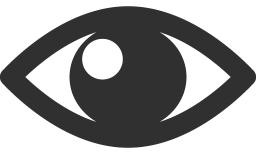Why Are Hentai Comics So Popular?
Page Contents
Why Are Hentai Comics So Popular?
You’ve likely noticed hentai comics dominating online spaces, drawing millions with their bold, imaginative worlds. They let you escape into fantasies that defy reality, exploring desires you’d never voice aloud. Yet, their rise isn’t just about shock value—cultural roots and digital shifts play key roles, hinting at deeper reasons for their global grip.
The Appeal of Exaggerated Fantasies

One reason some audiences are drawn to hentai comics is the presence of exaggerated fantasies, which feature intentionally distorted physical characteristics and scenarios that go beyond real-world constraints. These narratives often depict body proportions, interpersonal dynamics, and situations that aren’t possible or socially acceptable in reality. As a result, readers can vicariously explore hypothetical or taboo themes in a fictional context. However, many readers still prefer to consume hentai content through videos, on free hentai streaming websites.
Hentai comics often serve as a form of escapism, allowing individuals to engage with content that isn’t accessible in everyday life. The exaggeration of certain elements—such as physical traits or supernatural situations—plays a significant role in distinguishing this genre from more conventional forms of adult content.
For some readers, this genre offers a space to examine or imagine experiences outside societal norms, contributing to its ongoing appeal within specific communities.
Artistic Creativity and Unique Styles
Hentai comics are characterized by distinct artistic approaches, including the use of exaggerated character designs and imaginative scenarios. Usually, comics are based on popular hentai series, many of which you can find on streaming sites such as hentai.is.
These styles have roots in historical Japanese art forms that played a role in shaping modern manga.
During the 19th and 20th centuries, various cultural and artistic influences contributed to the development of hentai’s unique visual language.
In the 1970s, ero-gekiga magazines introduced story-driven narratives and innovative visual techniques.
This period saw significant experimentation, and many conventions used in contemporary hentai emerged during this time.
Artists developed methods to navigate censorship regulations established in 1907, often incorporating elements of fantasy and stylized depictions to comply with legal requirements while maintaining creative expression.
Distinctive aesthetics such as “bishōjo” (featuring young, idealized female characters) and cartoon-cute (chibi or kawaii) character designs are prominent within the genre.
Hentai commonly utilizes monochrome illustration formats, and adaptations into anime allow for the exploration of various themes using a range of artistic techniques.
These characteristics have contributed to hentai’s recognition within both manga and anime communities as a distinct form with specific visual and narrative conventions.
Exploration of Taboo Topics
Hentai comics frequently address taboo subjects that are often restricted in mainstream media due to legal and cultural boundaries. These works may depict fictionalized scenarios involving themes such as non-consensual sex or human-animal encounters, often using fantastical elements like monsters to navigate around real-world limitations. Research suggests that readers, including those with higher levels of neuroticism or anxious attachment, may use this genre to safely explore complex or prohibited fantasies, such as incest or BDSM, in a controlled and fictional context. Surveys indicate that approximately 27% of Americans have fantasized about cartoon characters in scenarios that might be considered taboo, suggesting a broader curiosity about such themes. Historically, tropes such as tentacle imagery have been used in hentai as a workaround for censorship laws. Additionally, studies note that up to 40% of non-heterosexual participants have engaged with hentai to explore non-traditional or non-human sexual themes, indicating that the genre can serve as a space for marginalized desires that are underrepresented in conventional media.
Digital Accessibility and Sharing
The advent of the internet in the late 1980s and early 1990s significantly increased the accessibility of hentai content.
During this period, dedicated websites and online newsgroups began to appear, enabling users to share manga scans, images, doujinshi, and related materials on a global scale.
These online platforms facilitated the distribution of erotic manga and anime, making it available to a broader audience without the need for traditional underground networks.
Online communities played a key role by providing forums and sites where users could discuss, share, and locate doujinshi and fan art.
This digital environment made it easier for individuals to access Japanese erotic manga and engage with like-minded enthusiasts, contributing to a growing international interest.
The proliferation of digital sharing ultimately expanded the global reach of hentai and increased the visibility of adult themes in manga and anime.
As a result, such content became more widely recognized and consumed outside of Japan, reflecting broader trends in the globalization of popular culture.
Cultural Influence on Global Audiences
As digital sharing expanded access to hentai, it contributed to notable cultural changes among global audiences.
Early milestones, such as the 1970 American theatrical release of Osamu Tezuka’s Cleopatra, introduced erotic anime elements to Western viewers and prompted a re-evaluation of Japanese animation in international contexts.
In the late 1980s, interest in untranslated erotic anime at fan conventions facilitated the growth of international subcultures that contributed to the broader dissemination of hentai comics.
By the early 1990s, online newsgroups such as ABPEA enabled the sharing of manga scans and supported the development of cross-cultural dialogues around erotic anime content.
The 1993 American release of Urotsukidoji drew further attention to genres such as tentacle-themed erotica, which subsequently influenced certain Western interpretations of erotic media.
As of 2022, hentai ranks among the most commonly searched terms on several adult content platforms, and surveys indicate that a significant proportion of American respondents report fantasies involving anime characters.
These developments reflect the evolving impact of hentai on global perspectives regarding animated erotic material.
Conclusion
You’ve discovered why hentai comics captivate so many: their exaggerated fantasies let you escape into impossible worlds, while artistic styles spark your creativity. You’re drawn to exploring taboos safely, and digital platforms make sharing effortless. Cultural influences broaden your horizons, connecting you to global communities. Whether you’re seeking thrills or understanding desires, hentai’s popularity shows it’s more than niche—it’s a vibrant outlet for your wildest imaginings. Dive in; you’ll see the allure firsthand.
 46
46

